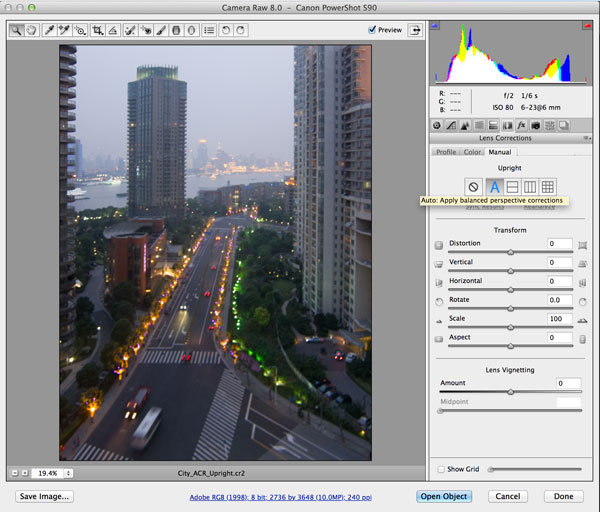Adobe addresses Creative Cloud concerns but won’t back down on subscriptions
posted Wednesday, May 29, 2013 at 6:32 PM EST

Adobe's new Creative Cloud product suite has proven pretty divisive since its announcement three weeks ago, and the company has today made a new statement addressing three of the main concerns: pricing and the subscription model, the all-or-nothing approach to apps, and file access should you decide to cancel your subscription.
The concern we've heard most from readers relates to the new subscription model, which can either be seen as a significant discount, or a very steep price hike depending upon your perspective; we'll take a look at that first.
For customers who've needed to purchase most or all of the apps in the earlier Creative Suite, and who've opted to upgrade at every product cycle, Creative Cloud offers a great deal in the short to medium term. To date, Adobe has averaged around 17 months between major Creative Suite releases, making the US$50 a month for a full Creative Cloud membership pretty attractive. Over 17 months, you now pay around US$850, far below the US$2,600 of earlier Master Collection releases, and only a few hundred dollars more than upgrade pricing on Creative Suite.
The barrier to entry is far lower, and based on the most recent pricing for Creative Suite, you'd need to subscribe for seven years or more before the cost of your subscription outweighed that of simply purchasing the software. Of course, that doesn't take into account the fact that previously, you could deactivate your software and sell it, or simply run multiple workstations and continue to use the older release in parallel with the new one. Regardless, though, the much lower initial outlay makes the subscription plan attractive, for the bleeding-edge power user.

Things are much less attractive, however, if you needed access to just two or three apps in the suite -- and that's true for more than a few of the photographers who make up our readership. Let's say that you need just two apps: Photoshop and Premiere Pro. Previously, you paid US$1,500 for the two apps if you were new to the suite, and around US$350 for subsequent upgrade editions. Now, you'll pay US$40 per month at regular pricing. (A launch discount is available if you already own a recent Creative Suite version, but that price lasts only one year, after which time you'll pay the standard price.)
The barrier to entry is still lower than it was until now, with the Creative Cloud subscription cost taking three years or so to match the previous Creative Suite price -- but after that point, you'll be paying a lot more. Instead of spending US$350 every couple of years, you'll now pay around US$680 -- and that is again before you take into account the fact that previously you could sell your old version or continue to use it in parallel with the new one, not to mention the fact that you could choose to upgrade to new releases less frequently, if you wanted.
When you crunch the figures, it's easy to see why Adobe is faced with both whoops of joy and cries of anger from customers. The company's most devoted customers are very definitely seeing a significant savings in the medium term, but it seems to have been subsidized those who only needed a couple of apps, or who didn't regularly upgrade to new releases. It's the latter who've been particularly vocal since Creative Cloud's announcement, and understandably so. What's surprising is the sheer numbers who've turned out to air their frustration: a petition at Change.org is now nearing 27,000 supporters.
A blog post from the Creative Cloud product team makes clear they're aware of the backlash against their new creation, but it makes equally clear that the new subscription model is not up for discussion, stating that:
"Some customers are not convinced that Creative Cloud is right for them and would rather continue to purchase desktop applications as before ... [We] have no plans to change our focus on Creative Cloud. We understand this is a big change and for customers who are not yet ready to move, we will continue to offer CS6 products through our reseller partners and Adobe.com."
So in other words, your choices are to subscribe, or to stay with the final release of Creative Suite 6. For some photographers and videographers, this may be a workable solution: For the time being, Adobe continues to update Camera Raw for Creative Suite 6 in parallel with that for Creative Cloud, although there has been no statement as to how long this will continue.
If you need to work on files shared by Creative Cloud customers, though, sticking with an old release may not be possible. While there's a measure of forwards-compatibility in the Creative Suite 6 apps, they can't adjust properties specific to Creative Cloud's output. If, for example, you're given a layered image to work on containing a radial gradient, that effect will be baked into your file in a manner that you can't change, because CS6 lacks the radial gradient tool -- and Adobe has made clear that CS6 will not be receiving any of the new features.

On two other fronts, though, there are signs of movement in response to the backlash of dissatisfied customers. Adobe suggests that it is looking to address the concerns of photographers in particular, stating that:
"Photographers, particularly photo-enthusiasts, are looking for a more tailored offering that focuses on their particular needs ... [We] are looking at potential offerings that recognize the photography community – because it is so broad – has some unique needs."
Those offerings, presumably, will consist of new bundles containing only the apps photographers will most likely desire, at a discount over pricing for the full Creative Cloud, and over the cost of renting each app individually at US$20 per month. No definitive statement has been made as to what to expect, but should new bundles for photographers be announced by Adobe, you can be sure to hear about them on our news page.
And finally, Adobe has addressed concerns that if a Creative Cloud subscription isn't renewed, the user may lose access to their files. Again, there's very little detail given, but the company pledges to address these concerns, noting:
"Customers want to be sure that, if their membership to Creative Cloud lapses, they will still have access to their files ... Adobe completely agrees that customers should have access to their files if they choose to stop their Creative Cloud membership. Our job is to delight our customers with innovation, but there are a number of options open to us here and we expect to have news around this issue shortly."
What do you think: Is Adobe doing enough to address your concerns with Creative Cloud? If not, what would need to happen for you to change your mind? Or is this whole thing a storm in a teacup, from your perspective? Discuss in the comments below.